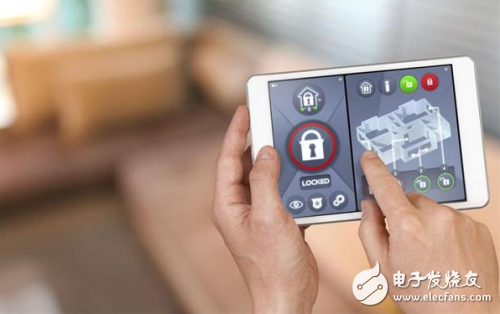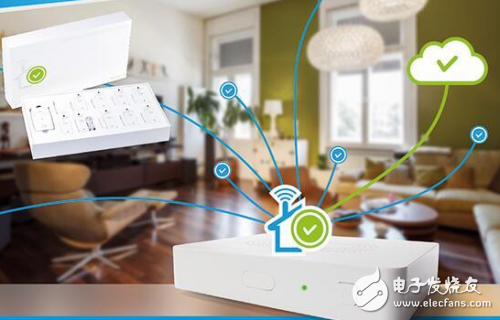Consumers using smart home appliances without considering security may attract hackers and thieves, making smart home appliances voyeuristic.
Repeated research shows that devices designed to automate homes have serious weaknesses. HP's survey of 10 off-the-shelf home security systems revealed that many devices have weak password policies and are unable to prevent "man-in-the-middle attacks." Others have not blocked access to the debugging interface of the device. According to an April study by code security company Veracode, this may make the device vulnerable to hacker attacks.
Moreover, according to a study by the security company Synack, if an attacker can access the device, then almost all the devices are easily hacked and become Trojan horses. In fact, as long as the researchers turn on the hardware, it only takes 5 to 20 minutes to find a way to invade every device.
Floor sweeping robots with cameras, monitors responsible for monitoring children or pets at home ... As more and more smart home devices enter the home, some security vulnerabilities are frequently exposed. In the hands of some criminals, they easily invaded and controlled these smart home appliance cameras by cracking software or IP addresses, and directed the lens to private places such as bedrooms or bathrooms to spy on personal privacy, so smart home appliances became voyeurs.

What is even more terrible is that even behind it will form an industrial chain that steals privacy. In some QQ groups, camera cracking software and camera IP addresses are publicly sold, ranging from tens to hundreds of yuan. In addition to peeping, there are also sellers who use privately recorded videos as pornographic videos for profit.
"Tech companies are really trying to push products into the market and really compete in the IoT field, but they don't have a security staff in their team, so there are many small issues that are ignored." Synack's security research analyst Colby · Moore said, "Most companies ignore basic principles."
According to data from Gartner, a market research organization, by 2018, global corporate security spending will reach 96.3 billion US dollars, an increase of 8% over 2017. As a result of regulation, buyers ’mindsets have changed, they are aware of emerging threats and are evolving into digital business strategies. By 2020, more than 60% of enterprises will put into use a variety of data security tools, such as data loss prevention, encryption, and data-centric auditing and protection tools. These tools have risen from about 35%.
IDC expects global Internet of Things (IoT) spending to reach US $ 772.5 billion in 2018, an increase of 14.6% from the US $ 674 billion spent in 2017.
Although AppleWatch may be the most well-known device on the Internet, many of the "things" you will connect in the future will be part of your smart appliances. Unfortunately, the upsurge of providing users with home automation functions has not allowed the system to achieve the security it deserves. Instead, it has provided more attack channels for cyber attackers.
Veracode's security research architect Brandon Creighton said in a statement: "We are very excited about the realization of the Internet of Things and the future development, but this does not mean that network security has become a victim in this process."
For example, the security company Synack tested cameras, thermostats, smoke detectors and home automation controllers to find security holes. The company considered four scenarios that could affect consumers: hackers hacked into devices at home within two minutes, cell phones were stolen, eavesdroppers monitored the victims over the Internet in cafes, and more advanced hackers before the victims bought Successfully modified smart home appliances.
Every device has security flaws. For example, consumers want to control their homes through smartphones, which means that losing their devices may have a significant impact on home safety. In addition, many products do not use encryption technology.
"I have to say, I was shocked, and it was very, very shocking." Moore said.
For consumers who embark on a journey of home automation, here are some of the simplest steps to make smart home appliances as voyeuristic as possible.

A router is a digital channel in the home, and a router with a low security factor allows an attacker to easily access all smart home appliances in your network. For example, in June of this year, Ms. Hu in Hangzhou discovered that her home ’s camera was moving without action. She logs in to the mobile client and finds that only one of her users' cameras is bound, and there are actually two users watching online at the same time. In early August this year, when using the camera in her home, Ms. Huang in Chongqing also found that the camera mounted on the ceiling turned on its own. She checked on the background of the computer and found that in addition to her own account, another stranger was watching the camera.
Users should invest in routers with good security records to ensure that the default administrative password has been changed and that the current firmware is running.
Prevent tampering with the deviceAccording to research by security company Synack, using smart home appliances for two minutes did not give the attacker enough window to modify the device. However, devices with a USB update mechanism are vulnerable to rapid intrusions.
Home users should place the device where others cannot easily access it, with special emphasis on devices with management ports.

Cloud services are designed to help consumers manage home automation equipment, such as Vivint, ADT, or similar service providers, which usually cost money. If not properly protected, it will cause privacy and security issues. However, in most cases, service providers can protect services better than home users. If you do not use cloud services, you will be responsible for checking the security of the system.
Therefore, consumers can choose a reliable cloud service provider for a certain price to make their home automation more convenient and safer. However, users do need to choose complex passwords and should ask for two-factor authentication, which adds another layer of security to access accounts.
Update deviceRelatively speaking, many developers who develop software for home automation products are new to security. David Jacoby, a security analyst at KasperskyLab, tried to hack into his own home and found some simple vulnerabilities in his home storage product.
"Developers have an excuse to say that they are not security personnel." He said, "but we need to let vendors fix the vulnerabilities they know."
He said that as security features need to be improved, application updates are a critical step to ensure that home automation devices remain safe in the simplest attacks.
Choose well-known brandsA company that has just set foot in smart home appliances will not take the safety of their products seriously. Synack ’s Moore said consumers should focus on companies that are committed to products and product safety.
"Of course you would rather want to stand by someone who is a reputable person." He said, "At least they will stand behind their products and keep updating."
The multi-speed air supply mode can bring you a comfortable and cool breeze in various scenarios. The 180° wide-angle surrounds the healthy and refreshing natural wind, and the soft wind blows on the face, returning to the natural and refreshing. The fuselage is equipped with a lanyard, so you can take the wind with you anytime anywhere.
Neck Fan,Small Fan,Portable Mini Fan,Hanging Neck Fan
Dongguan Yuhua Electronic Plastic Technology Co.,Ltd , https://www.yuhuaportablefan.com